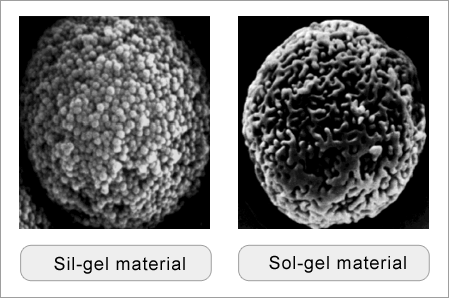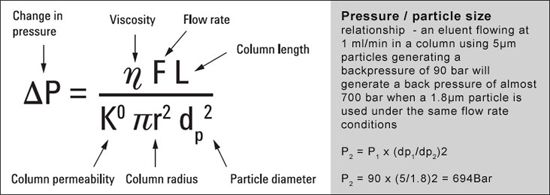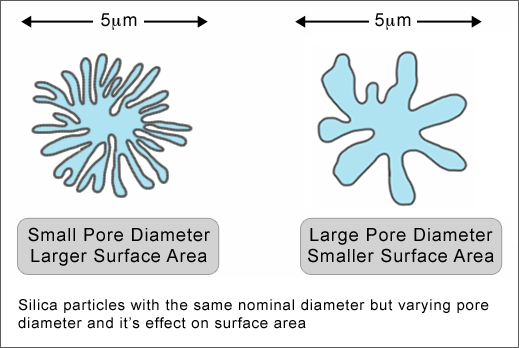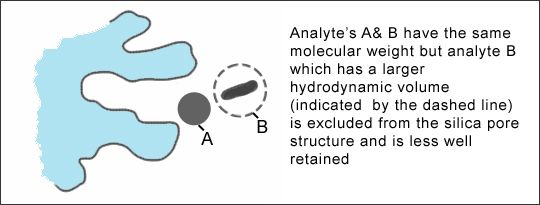The LCGC Blog: Things You Should Know About Your HPLC Column, Part I – Pore Sizes and Particle Diameters
The physical characteristics of silica-based HPLC columns can affect the performance of the separation almost as much as the bonded phase. This month's technical tip re-visits some of the lesser known or remembered facts relating to silica particles used for chromatography.
The physical characteristics of silica-based HPLC columns can affect the performance of the separation almost as much as the bonded phase. This month’s technical tip re-visits some of the lesser known or remembered facts relating to silica particles used for chromatography.
Silica particle manufacture

There are few companies, about a dozen or so, who manufacture silica for HPLC packing materials, but many more who bond stationary phase to silica from other manufacturers – as you probably know there are many column vendors and the PQRI column database contains over 600 different columns from a host of different companies. Silica particles for chromatography are based on synthetic silica polymers and are typically formed from tetraethoxysilanes which are partially hydrolysed to polyethoxysiloxanes to form a viscous liquid which emulsifies in an ethanol water mixture through vigorous stirring. This stirring causes the particles formed to be spherical and these spheres are converted to silica hydrogels through catalytically induced hydrolytic condensation (the ‘Unger’ method), which causes extensive crosslinking via the surface silanol species. The hydrogel spheres are then heated (dried) to produce a xerogel. The pH, temperature, catalysts and solvents as well as the silica sol concentration all act to control the particle and pore size of the highly porous silica xerogel (sometimes called sol-gel) materials.
An alternative process uses silica microparticles which are then aggregated in solution using a urea / formaldehyde reagent to produce particles consisting of agglomerated microspheres – the so called ‘sil-gel’ materials. The concentration and diameter of the microparticles as well as the reaction conditions, control the particle size and pore size of the resulting sil-gel particle.

Particle Size
The particle size of the silica spheres controls the efficiency of the silica material and refers to the average diameter of the silica particles used for the column packing. It should be noted that the particle size quoted is the average value, which comes from a range of particle sizes, and the smaller the particle size distribution, the more efficient and robust the packing material. Manufacturers often quote a D10/90 ratio – which is the ratio of particle sizes at the 10 and 90th percentiles of the normally distributed range of particles. This gives an indication of the breadth of the particle size distribution with a value of 1.2 or lower considered as very good.
Smaller particles produce more highly efficient separations, or perhaps more usefully, equivalent separations using smaller packed beds at high eluent flow rates.
Both column back pressure is inversely proportional to the particle size, according to the following relationships;

Chromatographic efficiency is inversely proportional to particle size according to the following general relationship:

Where L is the column length and dP the particle diameter.
Therefore changing from a 5µm to 3µm particle and keeping all other factors constant, will produce an increase of
20 -25% in efficiency and subsequently around a 9 - 12% increase in chromatographic resolution.
Small particles (<2µm) are typically used for high resolution separations using longer columns, or high speed separations using shorter columns and often require the use of specialist HPLC systems capable of dealing with high back pressures.
Intermediate particle sizes (2 – µmm) are typically used for more complex separations of similar components where
ultra-high high speed is not a primary factor.
5 – 10µm particles are used for routine analyses of less complex samples or for preparative chromatography where analyte capacity (loading) is of high importance.
Pore Size

Silica particles for chromatography have very high surface area, a property that is required for good analyte retention. Most of the surface area is contain in the internal pore structureof the silica particles which have over 99% of the available surface area. A typical surface area for the silica used for chromatography is around 330m2/g and in a 150 x 4.6mm column there may be as much as 1.5 g of silica - which means your everyday HPLC column has around the same surface area as an average tennis court!!
The surface area of the particle is inversely proportional to the pore diameter and therefore a 3 mm particle with a 120 nm pore diameter will have more than twice the surface area of a 3µm particle with a 300 nm pore diameter.
There are a number of pore diameters used by manufacturers to control retention.
Columns with pore diameters in the range 8 – 12 nm are typically used for the analysis of ‘small molecules’ (< 3,000 Da) which can easily penetrate into the pores and access a great majority of the silica surface. These are known as ‘small or narrow pore’ columns and are not useful for the analysis of larger molecules such as peptides or proteins, which are excluded from the pore due to their larger hydrodynamic volume. Typically the pore diameter needs to be three times the times the hydrodynamic diameter of the analyte in order to be accessible. Most manufacturers tend to keep a similar pore volume across columns of the same bonded phase but different particle diameter. When choosing between columns for small molecule analysis pore diameter is not usually a primary consideration, although if slightly more or less retention is required, and all other factors have been explored, changing pore diameter can bring about changes in retention without altering selectivity providing the same bonded phase is used.

As a general rule, a pore diameter of 10 nm or less should be used for analytes below 3,000 Da. A pore diameter of 10 – 13 Da is recommended for samples in the range of 3,000 - 10,000 Da. For samples above 10,000 Da, including peptides and proteins, a 30 nm material provides the best efficiency and peak shape
For more information – contact either
Bev (bev@crawfordscientific.com) or Colin (colin@crawfordscientific.com).
For more tutorials on LC, GC, or MS, or to try a free LC or GC troubleshooting tool, please visit www.chromacademy.com
The LCGC Blog: Historical (Analytical) Chemistry Landmarks
November 1st 2024The American Chemical Society’s National Historic Chemical Landmarks program highlights sites and people that are important to the field of chemistry. How are analytical chemistry and separation science recognized within this program?
